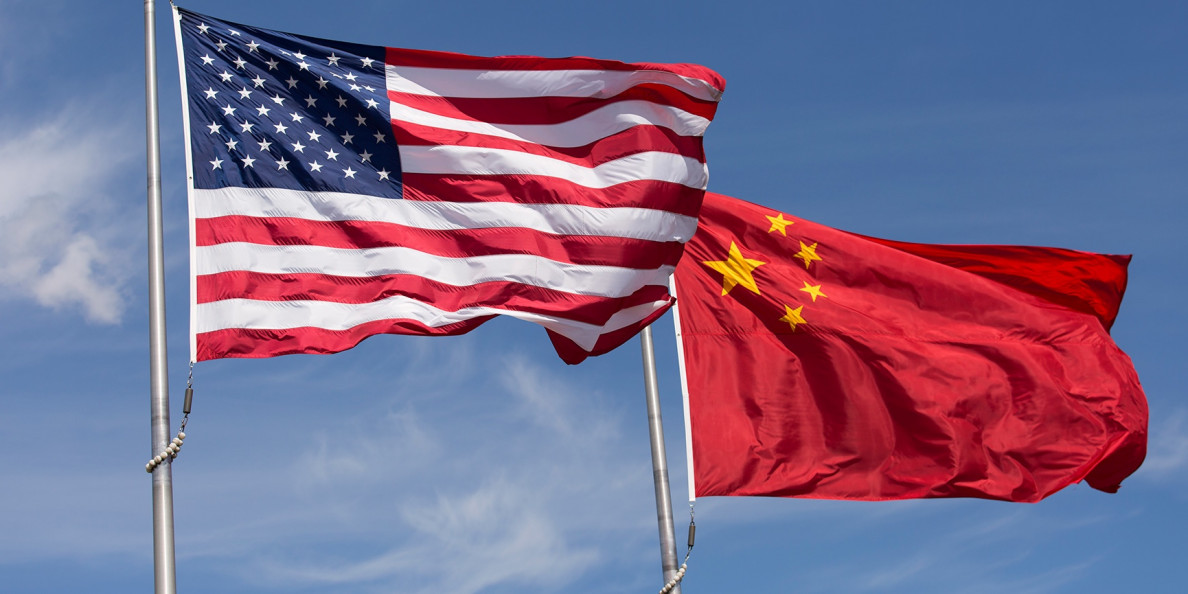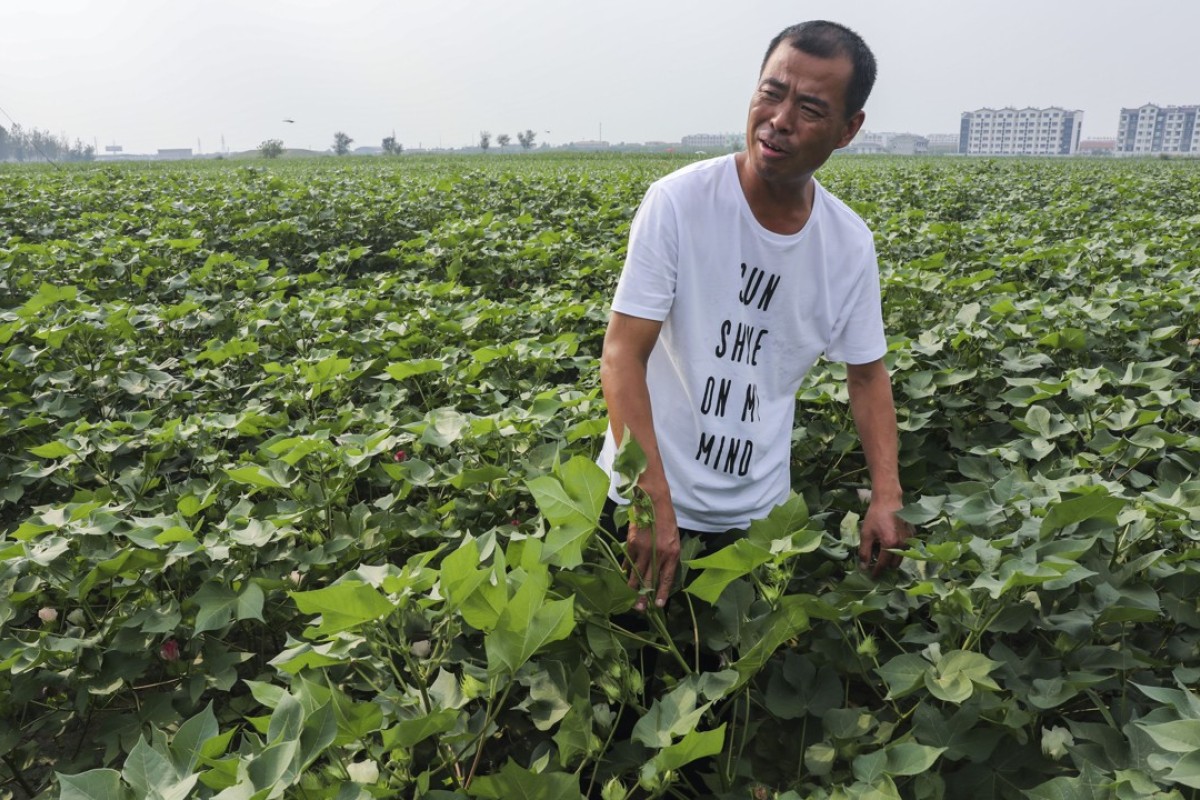With both China and the US slapping tariffs on imported products, people operating businesses in the two nations are bracing for impact. In the first of a series of articles exploring how the trade war affects various sectors in China, The South China Morning Post looks at how those involved in textile production are caught up in a waiting game
At 4pm on a recent afternoon, Sun Yujuan, a 38-year-old farmer, was checking her cotton plants in the eastern Chinese province of Shandong, a traditional textiles production base where her family has a hectare of land.
For more than two decades, Sun has been planting cotton, the best crop for the saline soil of Shahuliu village, part of Binzhou city. With her husband living in another city as a migrant worker, Sun has been taking care of their child and the land alone for years.
Used to the hardship working in the fields, Sun did not take any break while detecting pests on her cotton plants in the sweltering summer heat.
She took a picture of one pest and uploaded it to a mobile phone app. “I’m sending to cotton experts. They usually get back quickly on what the pest is and how I should treat it,” she said.
In about two months, her cotton will be picked and transported to market – where dynamics have been changed by the trade war initiated by US President Donald Trump.
“If the cotton price is good, I’ll be happy to plant more cotton and less corn next year,” Sun said. “Will the cotton price really go up?”
Cotton is under the spotlight since China announced in April it would be assessing a 25 per cent tariff on US cotton, among 106 commodities and products imported from the US, in retaliation to Washington’s punitive measures on Chinese goods. Those tariffs took effect on July 6.
The tariffs […] will bring profound changes to the world agriculture sector and the supply chains Ma Wenfeng, analyst
“The tariffs, if in place for a long time, will bring profound changes to the world agriculture sector and the supply chains,” Ma Wenfeng, a senior analyst with Beijing Orient Agribusiness Consultants, said.
“In the short term, China will replace reduced US cotton with that from Brazil, Australia and India. In the longer term, it will seek to rely more on domestic cotton.”
China uses more than 8 million tonnes of cotton annually, with 14 per cent relying on shipments from the United States, Australia, India, Uzbekistan, Brazil and other countries.
The US, China’s top overseas supplier, shipped more than 500,000 tonnes of cotton to China last year, statistics from the China Textile Information Centre and the US Department of Agriculture (USDA) showed, constituting 44 per cent of China’s cotton imports.
China already had a quota system on its cotton imports in place to protect domestic farmers. Before the trade war, it levied a 1 per cent duty on imports under the annual quota of 894,000 tonnes per its World Trade Organisation entry commitments. Volumes in excess of the level were subject to tariffs of five to 40 per cent, depending on the import price.
The punitive tariff, which brings total tariffs to between 26 and 65 per cent, would raise the price of US cotton by around 4,000 yuan (US$585) per tonne, forcing processors to seek alternative suppliers and pressing Beijing to expand domestic output of quality cotton at a crucial time, analysts said.
China’s cotton inventory was less than 6.5 million tonnes last year, under half the reserves it had in 2014, USDA data showed.
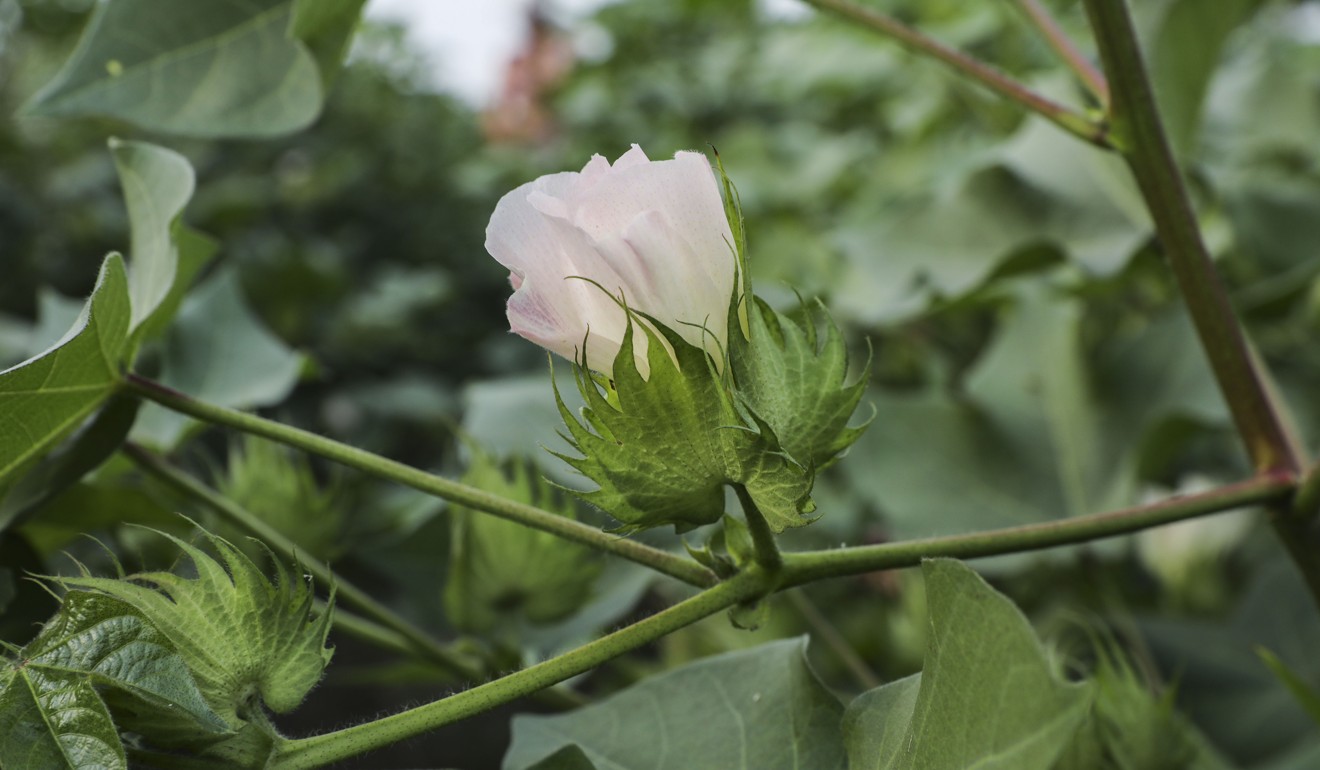
The smaller stockpile was a result of Beijing’s measures to reduce inventory after a 2011 bubble, as well as of farmers’ reluctance to plant cotton when prices were low. In the last three years, annual output has hovered at around 5 million tonnes, a level that is a two-decade low.
“The situation will be tougher for China. We have been witnessing ongoing buy-backs and cancellations” of US import volumes, and switches to Brazilian cotton, said Anestis Arampatzis, a senior risk management consultant at the New York-based commodities brokerage INTL FCStone.
“US cotton purchases by China for the 2018-19 marketing year [starting from August 1] are almost non-existent, while we still witness some demand for the following year,” he said.
Two China-based traders said they were deeply worried about the impact brought by the trade war.
“It’s difficult to foresee the prospects of the trade war. Reacting to the punitive tariff already in place, everyone has to act promptly,” one trader said on condition of anonymity. “We are switching from US cotton to other origins – India, Australia, Brazil, Greek.”
Concerned about inventory running low, China in June approved 800,000 tonnes of additional cotton import quotas for 2018, the first time it has allowed any extra quota in five years.
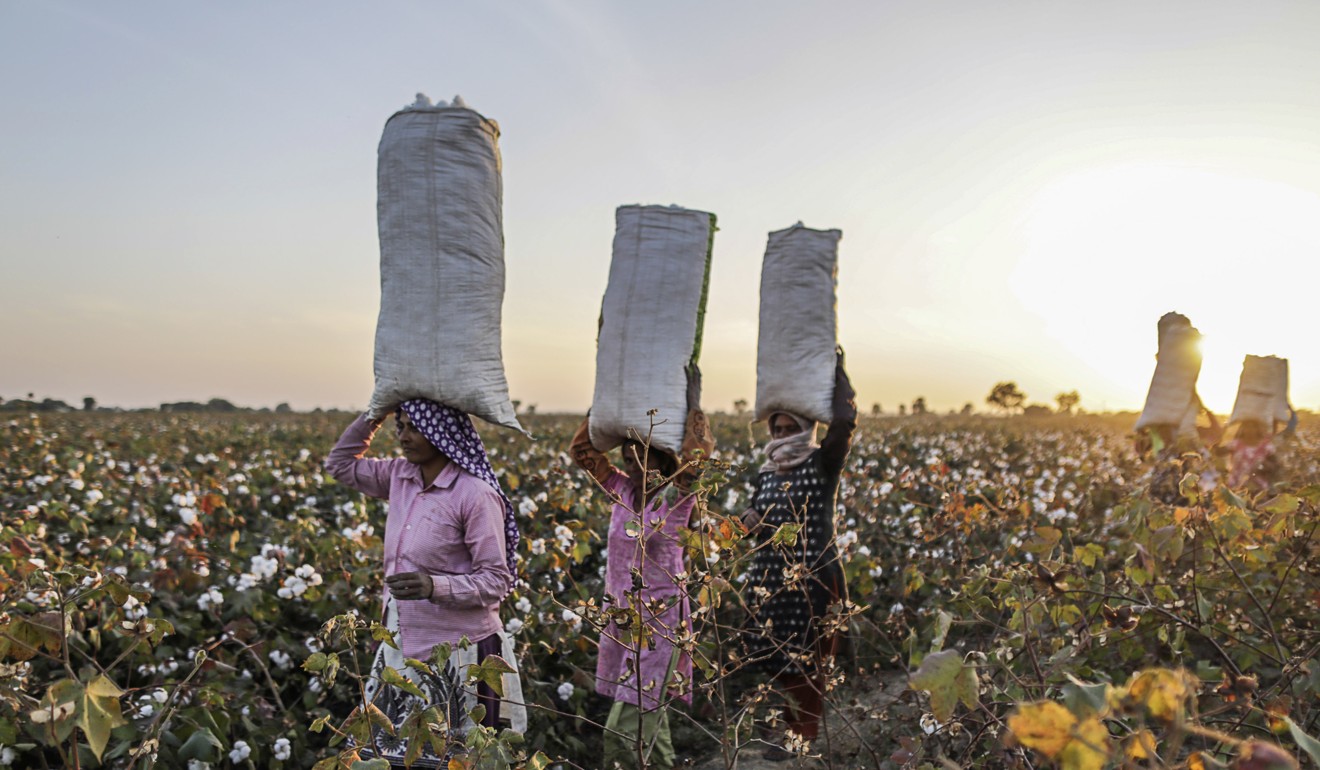
India’s cotton shipments to China could grow fivefold to 5 million bales (850,000 tonnes) in the next crop year as exporters rack up orders amid a trade war, Reuters reported in June, quoting an Indian trader who claimed to have got “good inquiries from China” for the new season’s crop.
India had already signed contracts to ship 500,000 bales of their new season harvest to China, Indian officials said in June, in rare advance deals.
However, Indian cotton may not become a key source to replace US cotton, at least for this marketing year, because of its lower quality grades. Also, earlier this month, New Delhi raised the minimum cotton selling prices for farmers by 26 to 28 per cent, according to Arampatzis.
Chinese buyers were more inclined to replace US cotton with those from Australia and Brazil for their better quality, another Beijing-based trader said.
However, Nick Carracher, a Sydney-based senior risk management consultant at INTL FCStone, forecast that Australia cotton was also unlikely be a major force to help offset reduced US cotton purchases significantly in the near-term, since drought conditions in northern Australia would limit the nation’s output.
Wang Wenfeng, a senior cotton expert in Binzhou Municipal Bureau of Agriculture, said the trade war was expected to allow China’s cotton crop a window of opportunity to catch up in terms of quality. Generally speaking, Chinese cotton is considered inferior to US cotton in terms of consistency of fibres, purity and strength.
Researching cotton over three decades, Wang, together with several farmer representatives in Binzhou cotton planting co-operatives, has made several visits to Xinjiang, China’s largest cotton planting region, in the past few years.
“Xinjiang cotton, especially that in the north with high utilisation of machinery in processes from sowing to picking, is of good quality. In a few years, it may be able to help purchasers fill in the gap and become a winner,” Wang said.
“China’s traditional cotton fields, including those in Binzhou, are likely to become a backup choice because the planting area could be expanded quickly and quality is improving.”
Back in Binzhou, Sun Yujuan said she and the villagers were more frequently resorting to technology and machines.
She is one of the 600 or so members of the Shandong Binzhou Nongxi Cotton Professional Cooperative, a semi-governmental organisation that helps farmers use mobile phone applications to identify pests, get planting advice, and rent farm machinery imported from the US.
Wang Jianjun, chairman of the Nongxi Cooperative, said: “Cotton output can be increased by 80 per cent if our farmer members are convinced to plant cotton, and quality improvement is also under way.”
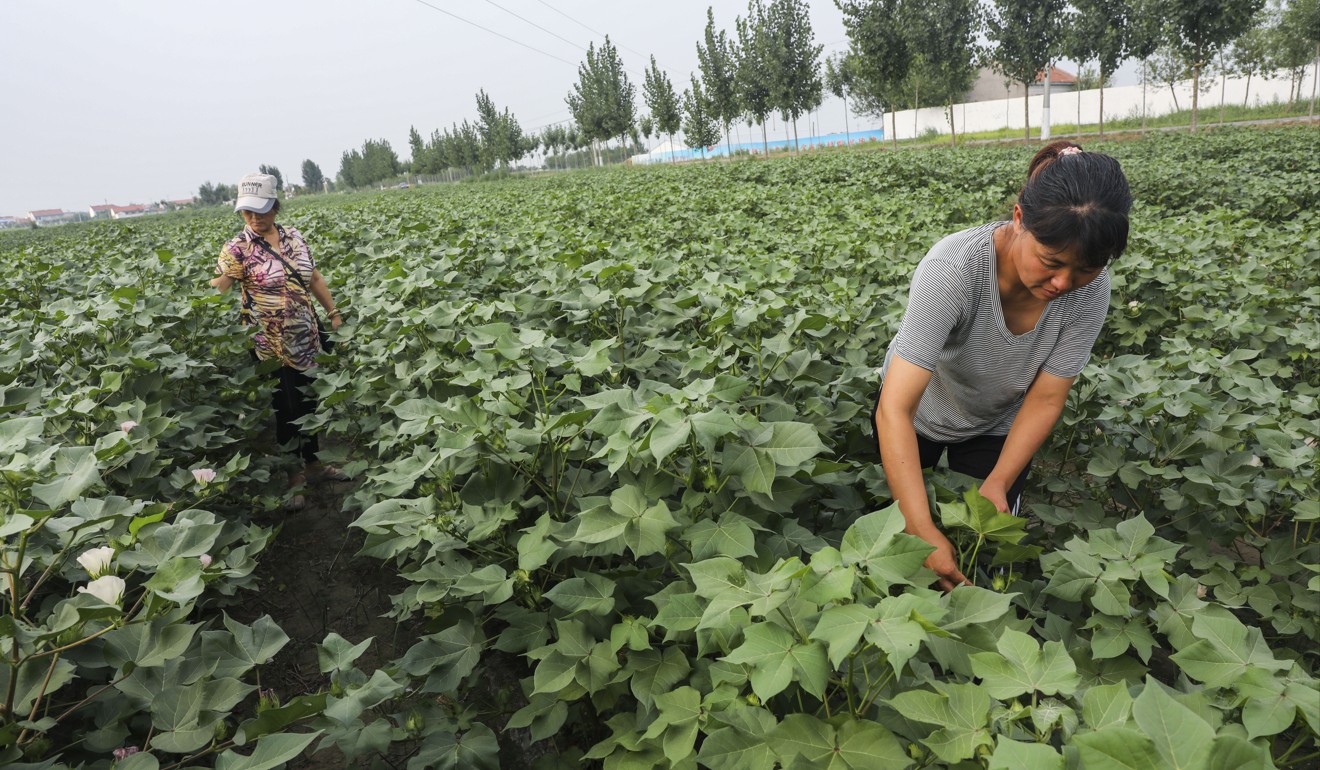
However, Ma with Beijing Orient Agribusiness, said that mass production and wide use of machinery would generally be impossible in China’s rural areas, since land there was worked by farmers separately and they relied on their income from the land because they were denied reasonable pensions.
Since the 25 per cent tariff was only instituted on July 6, it would take a few months to see the results, a representative at a trade body promoting US cotton exports said on condition of anonymity.
Even so, the official said, the tariff would likely spur China’s domestic cotton growing and processing industry to examine ways to upgrade products quality and expand output to reduce the need for imports.
To avoid the tariff, Chinese fabric makers could outsource the spinning of US cotton to Southeast Asian nations. Yarn spun in Vietnam and Indonesia could then be imported to China for fabric production with no tariff.
The tariff should also accelerate industry trends, the official said. Those include moves by global apparel brands to Southeast Asian nations as expenses in China rise for labour and environmental compliance.
“A few scenarios could play out,” the official said.

